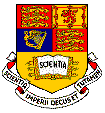Project Proposal: Visual Traffic Simulation
Project supervisor: Professor Jeff Magee
To develop a tool to allow an easy way to model a road network and a graphical simulation for traffic on the user-defined network. An Object Oriented approach will enable an extendable system so different behaviour can be introduced to test new hypothesis about traffic.
The first step is to build an application to create a road and traffic system model. Then the model must be tested with a visual simulation of the traffic on the model.
Traffic light timing and placement affects the journey time on roads. Some councils have tried implementing more intelligent traffic lights over small road sections. Once the application framework is built, the idea of this project is to see if traffic lights than can communicate with all other traffic lights (and adapt their timing) in a road network can improve journey times for road users.
Examples:
- Morning rush hour traffic light timing intervals for incoming traffic could be longer than the timing intervals for outgoing traffic. And vice versa for afternoon rush hour.
- Long streets of traffic lights could sequence the timing of green lights to allow a smooth as possible passage through the street.
Project Objective (what is the project demonstrating):
- To help understand behaviour of traffic visually.
- To test the influence of traffic lights on traffic systems.
- An Object Oriented approach will enable an extendable system so different behaviour can be introduced to test new hypothesis.
Project End-Users:
- Councils wanting to model/visualise their road network.
- Researchers wanting to test a hypothesis about traffic.
- As an Education tool to show the complexities of traffic on a broader scale.
Project Minimum Specification:
- Junction Building Interface:
- To easily build a model of any road junction.
- To specify traffic light configurations for a junction.
- To save junctions to form a library for future use.
- Road Network Building Interface:
- To drag and drop junctions next to each other to form a road network.
- To specify speed limits and road distances for junction-to-junction joining roads.
- Traffic Modelling Tool:
- To specify probability distribution that determines car numbers entering the system.
- To specify the proportion of the distribution for individual input.
- Visual Simulation:
-
Dynamic controls to:
- Change frequency of traffic entering the system.
- Change the time dimension of the simulation.
- Change traffic light heuristics:
- Pre-set times.
- Pre-set times with a sensor indicating a queue.
- Individually adaptive.
- Communicating and adaptive.
